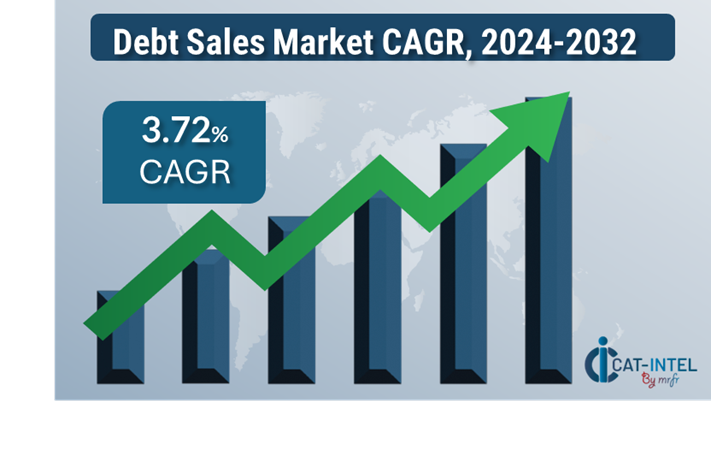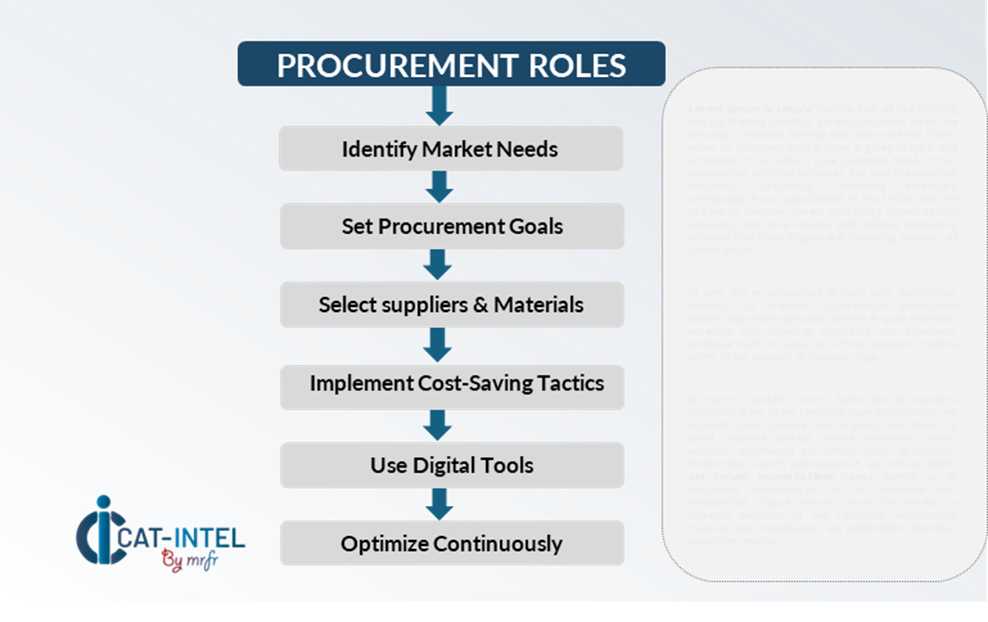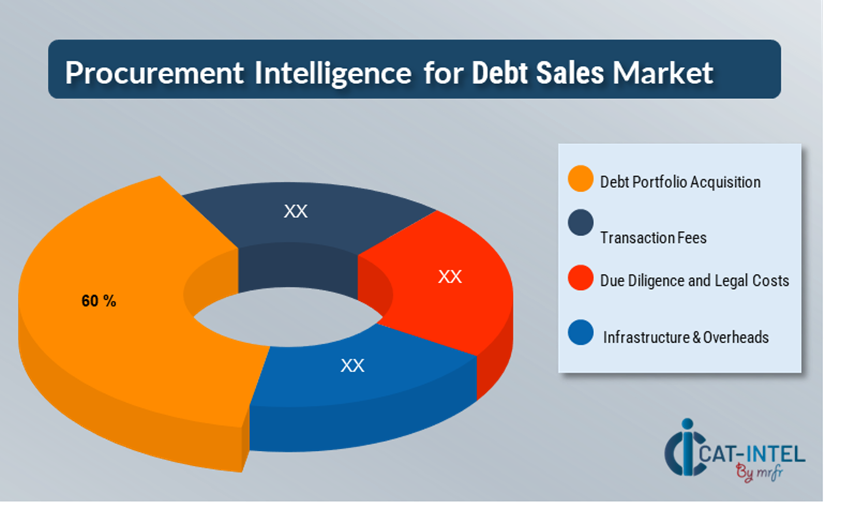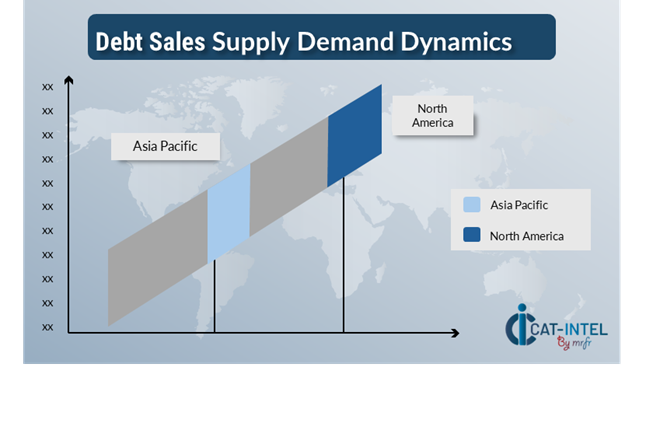Debt Sales Market Overview:
The global debt sales market is experiencing steady growth, fuelled by demand from financial institutions, collection agencies, and businesses aiming to manage distressed assets and reduce liabilities. This market encompasses the sale of non-performing loans (NPLs), defaulted debts, and distressed financial assets. Our report provides a comprehensive analysis of procurement trends, highlighting strategies for optimizing debt sale processes and managing associated risks.
Key future challenges in debt sales include navigating fluctuating market conditions, maintaining compliance with regulatory frameworks, and ensuring effective risk management in the sale of distressed assets. Leveraging digital tools and data analytics is crucial for streamlining debt sale processes and improving decision-making. As the market continues to evolve, companies are focusing on strategic sourcing and market intelligence to enhance operational efficiency and mitigate risks.
The debt sales market is expected to maintain steady growth through 2032, with key highlights including:
-
Market Size: The global debt sales market is projected to reach USD 198,345.0 billion by 2032, growing at a CAGR of approximately 3.72 % from 2024 to 2032.

-
Sector Contributions: Growth in the market is driven by:-
Financial Institutions: Increasing sales of distressed debts as part of asset management strategies. -
Collection Agencies: Rising demand for acquiring defaulted loans and non-performing assets for recovery.
-
-
Technological Transformation: Advancements in data analytics, automation, and digital platforms are enhancing the efficiency of debt sales, reducing administrative costs, and improving asset valuations. -
Innovations: Development of advanced algorithms for debt valuation and predictive analytics to assess recovery potential and optimize pricing during sales. -
Investment Initiatives: Financial institutions and private equity firms are investing in sophisticated platforms for debt trading, risk mitigation, and asset management. -
Regional Insights: North America and Europe remain significant contributors to the market due to well-established financial institutions and a high volume of distressed debts.
Key Trends and Sustainability Outlook:
-
Digital Integration: The adoption of blockchain technology, digital contracts, and online platforms is improving transparency and reducing transaction times in debt sales. -
Advanced Analytics: Utilization of predictive analytics to assess debt recovery potential and optimize sale decisions. -
Focus on Risk Mitigation: Growing emphasis on strategies to manage the risk associated with acquiring non-performing loans, including thorough due diligence and market monitoring. -
Customization Trends: Increasing demand for tailored debt sale solutions, such as the sale of specific types of defaulted loans (e.g., mortgages, credit card debts). -
Data-Driven Risk Management: Leveraging big data and AI to analyse debt portfolios and identify potential buyers, improving the efficiency of debt sales and ensuring higher recovery rates.
Growth Drivers:
-
Financial Sector Expansion: Growing reliance on debt sales to manage non-performing loans and improve balance sheets. -
Collection Agency Growth: Increased demand from agencies looking to acquire distressed assets for recovery. -
Sustainability Goals: Financial institutions are increasingly adopting sustainable practices in the sale of distressed debts, reducing their carbon footprint and adhering to ethical standards. -
Regulatory Compliance: Strict adherence to regulations governing debt sales, including transparency and reporting requirements, to ensure legal compliance and prevent fraud. -
Customization: Tailored solutions for specific debt types, offering bespoke debt recovery and liquidation processes for different industries.
Overview of Market Intelligence Services for the Debt Sales Market:
Recent analyses highlight the challenges of fluctuating market conditions, the need for accurate debt valuations, and the complexities of regulatory compliance. Market intelligence services offer actionable insights into procurement opportunities, allowing businesses to identify cost-saving measures, optimize buyer and seller relationships, and improve debt sale strategies. These insights also support compliance with industry regulations while ensuring risk mitigation and maximizing asset recovery.
Procurement Intelligence for Debt Sales: Category Management and Strategic Sourcing:
To maintain competitiveness in the debt sales market, businesses are refining procurement processes through risk assessment, spend analysis, and supplier performance tracking. Effective category management and strategic sourcing are essential for reducing costs, ensuring access to the right buyers, and enhancing the overall efficiency of debt recovery efforts. By leveraging market intelligence, financial institutions can improve their strategies, negotiate favourable terms for distressed assets, and navigate the complexities of the debt sales landscape.

Pricing Outlook for Debt Sales: Spend Analysis
The pricing outlook for debt sales is expected to remain relatively stable with some potential fluctuations driven by several key factors. Variations in the pricing of distressed debt assets are influenced by the condition of the asset, market liquidity, interest rates, and the overall economic environment. Furthermore, regulatory changes, such as stricter guidelines for the sale of non-performing loans (NPLs) or shifts in bankruptcy laws, may also contribute to pricing volatility. Increasing investor interest in distressed asset classes and demand for high-quality debt portfolios could drive upward price trends.
Graph shows general upward trend pricing for debt sales and growing demand. However, there may be fluctuations influenced by economic conditions, technological advancements, and competitive dynamic.
Efforts to streamline debt sale processes, improve risk assessment models, and enhance transparency are crucial for managing costs. Leveraging digital platforms, data analytics, and market intelligence tools to monitor asset valuations, forecast market trends, and plan asset liquidation strategies can contribute to more effective cost management.
Strategic sourcing of buyers, negotiation of favourable sale terms, and optimizing recovery processes will help mitigate pricing fluctuations.
Cost Breakdown for Debt Sales: Total Cost of Ownership (TCO) and Cost-Saving Opportunities

-
Debt Portfolio Acquisition (60%)-
Description: The largest portion of costs in debt sales is related to acquiring distressed debt portfolios, which include non-performing loans, defaulted accounts, or distressed financial assets. The purchase price of these assets is heavily influenced by market conditions, asset quality, and recovery potential. -
Trends: Buyers are increasingly relying on data-driven analysis and predictive modelling to assess the true value of distressed debt. Bulk purchases, long-term purchasing agreements, and diversification of asset types are common strategies used to mitigate price volatility. Additionally, the use of advanced valuation tools helps reduce the risk of overpaying for distressed assets.
-
- Transaction Fees (XX%)
- Due Diligence and Legal Costs (XX%)
- Infrastructure & Overheads (XX%)
Cost-Saving Opportunities: Negotiation Levers and Purchasing Negotiation Strategies
In the debt sales market, effective procurement processes and strategic negotiation tactics can lead to significant cost savings and improved profitability. Establishing long-term agreements with debt portfolio sellers, particularly in key asset regions, can result in better pricing and favourable terms, such as bulk discounts or deferred payment options. Negotiating the purchase of distressed debt portfolios in large volumes or through forward contracts can help mitigate market volatility and secure more competitive prices.
Collaboration with sellers that prioritize transparency, data-driven decision-making, and innovation in debt valuation models can provide additional advantages, such as access to high-quality distressed assets at lower prices. Leveraging digital tools for market intelligence, such as debt portfolio valuation platforms and analytics, enhances decision-making, improves asset pricing, and reduces procurement costs. A diversified network of sellers and adopting a multi-supplier strategy can help mitigate risks, such as asset overvaluation or unforeseen market shifts, and provide leverage during negotiations.

Supply and Demand Overview for Debt Sales: Demand-Supply Dynamics and Buyer Intelligence for Effective Supplier Relationship Management (SRM)
The debt sales market is experiencing steady growth, driven by increasing demand from financial institutions, investment firms, and debt collection agencies. The balance between supply and demand is influenced by factors like economic cycles, asset quality, regulatory changes, and the liquidity of debt markets.
Demand Factors:
-
Distressed Asset Acquisition Needs: Financial institutions are increasingly looking to offload non-performing loans (NPLs) and distressed assets to improve balance sheets, driving demand for debt portfolios. -
Investor Interest in High-Yield Debt: Investors seeking high-yield opportunities are fueling demand for defaulted loans, NPLs, and distressed financial assets, as they offer higher recovery rates. -
Regulatory Pressure: Financial institutions are under pressure to reduce non-performing assets (NPAs) in compliance with regulatory requirements, creating demand for buyers in the debt sales market. -
Customization of Debt Portfolios: Increasing demand for portfolios with specific asset types, such as mortgages, credit cards, or business loans, drives suppliers to offer customized debt sales solutions.
Supply Factors:
-
Market Liquidity and Economic Conditions: Availability of distressed debts is influenced by the broader economic environment, including economic downturns, financial crises, and market liquidity. -
Regulatory Changes: The sale of debt portfolios is subject to stringent regulatory guidelines, such as consumer protection laws and financial disclosure requirements, which affect the supply of distressed assets. -
Asset Valuation and Risk Mitigation: The supply of distressed assets is often constrained by the need for thorough due diligence and accurate asset valuation, ensuring that the portfolios sold align with market expectations. -
Operational Efficiency in Debt Recovery: Debt sellers’ ability to recover value from defaulted assets, including through collections or legal action, influences the availability and pricing of portfolios in the market.
Regional Demand-Supply Outlook: Debt Sales

The Image shows growing demand for debt sales in both North America and Asia Pacific, with potential price increases and increased Competition.
North America: Dominance in the Debt Sales Market
North America, particularly the United States, Canada continues to dominate the global debt sales market due to several factors:
-
High Volume of Distressed Assets: The region experiences a high volume of distressed debt due to frequent economic fluctuations, default rates, and large portfolios held by financial institutions. -
Mature Financial Market: North America has a well-established financial market with sophisticated infrastructure for debt sales, including robust debt collection systems, legal frameworks, and asset management services. -
Investor Demand: Investment firms and private equity funds are highly active in purchasing distressed debt portfolios, particularly non-performing loans (NPLs) and business debt, creating substantial demand. -
Regulatory Compliance: Stringent regulations on debt sales, transparency, and consumer protection in the U.S. ensure that debt sales are conducted with a high level of legal scrutiny, providing market stability. -
Innovation in Debt Valuation and Risk Management: The integration of digital tools and AI-powered analytics in debt portfolio valuation has led to more accurate pricing, improving transaction efficiency and driving market growth.
North America Remains a key hub Debt Sales Price Drivers Innovation and Growth.
Supplier Landscape: Supplier Negotiations and Strategies
The supplier landscape in the debt sales market is diverse and competitive, with a blend of large financial institutions, asset management firms, private equity groups, and specialized debt collection agencies driving industry trends. These suppliers play a crucial role in determining key factors such as asset pricing, debt recovery strategies, and portfolio management. The market is led by large institutional sellers, such as banks and financial services companies, offering bulk debt portfolios, while smaller, niche suppliers cater to specific asset classes, such as non-performing loans (NPLs) or distressed commercial debt.
The debt sales supplier ecosystem in major financial regions includes prominent leaders and emerging players that meet both global and regional needs. As demand for distressed debt portfolios increases across industries like banking, investment, and real estate, suppliers are enhancing their asset recovery capabilities, adopting advanced risk management technologies, and implementing innovative portfolio management strategies to deliver high-quality, cost-effective debt solutions.
Key Suppliers in the Debt Sales Market Include:
- JPMorgan Chase & Co.
- Citigroup Inc.
- Bank of America Merrill Lynch
- Goldman Sachs Group, Inc.
- Deutsche Bank AG
- HSBC Holdings Plc
- Blackstone Group
- KKR & Co. Inc.
- Varde Partners
- Cerberus Capital Management

Key Developments Procurement Category Significant Development:
Significant Development |
Description |
Market Growth |
The debt sales market is expanding as more financial institutions and companies seek to offload distressed debt portfolios, particularly in response to economic fluctuations and regulatory pressures. |
Sustainability Focus |
Increasing emphasis on socially responsible investing (SRI) and environmental, social, and governance (ESG) criteria is driving demand for debt portfolios with better recovery potential and ethical considerations. |
Product Innovation |
Financial institutions and debt buyers are focusing on innovative debt resolution strategies, such as AI-driven debt recovery and blockchain for secure debt transactions, to improve portfolio performance and streamline sales processes. |
Technological Advancements |
Advancements in data analytics, AI, and machine learning are enhancing the accuracy of debt portfolio valuation and risk assessment, allowing buyers to make more informed decisions. |
Global Trade Dynamics |
Changes in global trade policies, economic sanctions, and cross-border debt recovery practices are impacting the supply and pricing of international debt portfolios, especially in emerging markets. |
Customization Trends |
The demand for tailored debt portfolios, such as specific asset classes like real estate debt, business loans, and consumer credit portfolios, is growing as investors seek high-return opportunities. |
|
Debt Sales Attribute/Metric |
Details |
Market Sizing |
The global debt sales market is projected to reach USD 198,345.0 billion by 2032, growing at a CAGR of approximately 3.72 % from 2024 to 2032. |
Debt Technology Adoption Rate |
Approximately 60% of debt buyers and sellers are leveraging advanced technologies, such as AI-driven analytics and blockchain, to streamline debt transactions and improve portfolio management. |
Top Debt Sales Industry Strategies for 2024 |
Key strategies include adopting AI and machine learning for risk assessment, focusing on portfolio diversification, and enhancing debt recovery solutions through digital platforms. |
Debt Process Automation |
Around 45% of debt buyers and sellers have implemented automation in debt valuation, recovery tracking, and reporting to improve efficiency and reduce administrative costs. |
Debt Process Challenges |
Major challenges include managing debt portfolio risks, dealing with fluctuating market conditions, ensuring compliance with regulations, and optimizing recovery rates in uncertain economic climates. |
Key Suppliers |
Leading players in the debt sales market include JPMorgan Chase & Co., Citigroup Inc., and Goldman Sachs Group, Inc., offering diverse debt portfolios to global investors. |
Key Regions Covered |
Prominent debt sales regions include North America, Europe, and Asia-Pacific, with significant activity in the banking, real estate, and consumer finance sectors. |
Market Drivers and Trends |
Growth is driven by the increasing demand for distressed debt portfolios, advancements in risk management technologies, regulatory changes, and the growing emphasis on sustainable investing. |
Frequently Asked Questions (FAQ):
A1: Our procurement intelligence services provide in-depth analysis of the debt sales market, identifying major sellers, evaluating market trends, and assessing buyer requirements. We offer spend analysis, supplier evaluations, and sourcing strategies to help secure profitable debt portfolios at competitive prices.
A2: We assist in assessing the TCO for debt portfolios by factoring in acquisition costs, servicing fees, recovery expenses, and risk management strategies. This comprehensive analysis ensures a clear understanding of the overall financial impact of acquiring distressed debt.
A3: Our risk management services address challenges such as fluctuating debt recovery rates, legal compliance, and market conditions. These strategies support secure, cost-effective debt acquisition and mitigate risks throughout the process.
A4: Our Supplier Relationship Management (SRM) services focus on developing strong partnerships with debt sellers. We assist in negotiating favourable terms, tracking supplier performance, and ensuring integration into your debt management strategies for long-term success.
A5: We recommend best practices such as risk assessment, portfolio diversification, due diligence, and performance tracking. These practices enable efficient and transparent debt portfolio sourcing while minimizing exposure to high-risk assets.
A6: Digital tools optimize debt procurement by automating due diligence processes, improving portfolio tracking, and streamlining recovery efforts. These advancements reduce costs, enhance decision-making, and boost operational efficiency in debt acquisitions.
A7: Our supplier performance management services assess key metrics such as recovery rates, legal compliance, and adherence to agreed terms. This ensures reliable performance from debt sellers and informs future acquisition decisions.
A8: We support negotiations by leveraging market insights, benchmarking costs, and using strategies like bulk debt acquisitions and flexible payment terms. These approaches help secure favourable terms with debt sellers and maximize returns on investment.
A9: We provide tools that offer insights into market trends, debt pricing, seller performance, and economic conditions. These resources enable data-driven decision-making for your debt portfolio acquisition strategies.
A10: We help ensure compliance with industry regulations and internal policies by verifying that debt sellers meet legal, financial, and ethical standards. This ensures compliance across all debt acquisition activities.
A11: We recommend diversifying debt sources, implementing contingency plans, and working with multiple sellers to minimize disruptions in debt procurement. These strategies ensure a consistent flow of debt acquisitions despite market challenges.
A12: Our tracking solutions monitor performance metrics such as recovery rates, compliance, and debt portfolio performance. This helps evaluate the reliability of debt sellers and informs future procurement decisions.
A13: We identify debt sellers focusing on ethical collection practices, compliance with environmental and social governance (ESG) standards, and transparent reporting. This helps align your debt procurement with sustainability goals.
A14: Our pricing analysis compares debt portfolio costs, tracks market trends, and applies negotiation strategies to secure cost-effective debt acquisitions. We ensure that the portfolios meet your investment criteria while maximizing returns.








